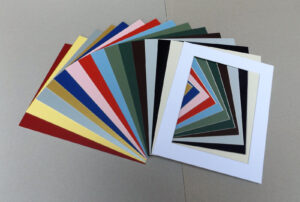(The Historical Evolution of Picture Frames)
Introduction
Picture frames have been an integral part of art and interior decor for centuries. They not only serve a functional purpose by protecting and displaying artwork, photographs, and other visual mementos but also carry a rich historical and artistic significance of their own. In this article, we take a journey through time to explore the fascinating evolution of picture frames, from their humble beginnings to the ornate masterpieces of art they have become today.
Ancient Origins
The origins of picture frames can be traced back to ancient civilizations. In Egypt, as early as 2,000 B.C., people used wooden and metal frames to protect and enhance their artwork. These frames were often decorated with intricate designs and motifs, reflecting the artistic sensibilities of the time. In ancient Rome, too, framed artwork was a common sight in households, demonstrating the enduring appeal of this practice.
Medieval Elegance
During the Middle Ages, picture frames gained more prominence and started evolving in design. Early medieval frames were often simple and functional, but over time, they became more ornate and decorative. The Gothic period, in particular, saw an upsurge in frame intricacy, with frames often featuring religious motifs and symbolism.
Renaissance Mastery
The Renaissance marked a turning point in the history of picture frames. Artists and craftsmen began to pay more attention to the design of frames, considering them an integral part of the artwork. These frames were made from various materials, including wood, gilded bronze, and marble, and were characterized by their lavish ornamentation. The frames of this era often incorporated classical motifs and mythological scenes, reflecting the renewed interest in antiquity.
Baroque Extravagance
The Baroque period, which followed the Renaissance, saw an even greater emphasis on opulence and ornamentation. Baroque picture frames were grand and extravagant, featuring intricate carvings, gilded surfaces, and dramatic shapes. They were designed to draw attention to the artwork they contained, creating a sense of drama and grandeur.
19th-Century Revival
The 19th century witnessed a revival of interest in simpler, more restrained frame designs. The Neoclassical movement brought back a focus on classical motifs and elegant, restrained frames that complemented the art rather than overpowering it. During this period, a greater variety of materials, including plaster and composition, were used to create frames that imitated the appearance of traditional wood and stone.
Modern Minimalism
As we entered the 20th century, picture frames took on a more minimalist and functional form. The Modernist movement embraced simple, sleek lines and geometric shapes, often opting for unadorned frames that allowed the artwork to shine. The Bauhaus school, in particular, played a significant role in shaping modern frame design by emphasizing the fusion of art and functionality.
Contemporary Diversity
Today, picture frames come in an astounding array of materials, styles, and designs, reflecting the diversity of contemporary art and interior decor. From sleek, metal frames in minimalist interiors to ornate, antique-inspired frames in traditional homes, there is a frame for every taste and aesthetic.
Art Nouveau Elegance
The late 19th and early 20th centuries also witnessed the emergence of the Art Nouveau movement, which brought a distinct and highly decorative style to picture frames. Art Nouveau frames often featured organic, flowing designs inspired by nature, including intricate floral patterns, whiplash lines, and female figures. These frames added a sense of delicacy and sensuality to the artwork they contained.
Cultural Influences
Picture frame designs have been heavily influenced by the cultures and artistic movements of their respective times. For instance, in Japan, intricate lacquerwork and delicate woodwork were often used to create frames for traditional woodblock prints. Chinese frames, on the other hand, reflected the rich traditions of calligraphy and painting. In Africa, tribal motifs and natural materials were used to create unique frames.
The Digital Age
In the 21st century, we have seen a shift in how we display and share images. The advent of digital photography and online platforms has transformed the way we interact with pictures. Digital frames have become popular, allowing for the rotation of multiple images and even video clips in a single frame. This represents a seamless blend of technology and aesthetics.
Customization and Personalization
Modern consumers often seek custom and personalized framing options. This trend has led to a surge in demand for unique and tailor-made frames that cater to individual tastes and preferences. Customization allows people to select specific materials, colors, and sizes, ensuring that the frame enhances and complements the art or photograph it holds.
Sustainability
With growing environmental consciousness, there is a rising interest in sustainable and eco-friendly frame materials. Many frame manufacturers now offer options made from reclaimed wood, recycled materials, or sustainable resources. This trend aligns with the broader movement towards responsible and eco-conscious consumer choices.
Artistic Versatility
Picture frames have also evolved beyond traditional rectangular shapes. Contemporary frames come in various geometric forms, including circular, oval, and hexagonal designs. These unconventional shapes add an extra layer of artistic versatility, allowing artists and homeowners to make bolder statements with their framed art.
Conclusion
The historical evolution of picture frames is a testament to the enduring importance of art in human culture and the desire to enhance and protect it. From their humble beginnings in ancient civilizations to the grandeur of the Renaissance and Baroque periods, and the simplicity of modern frames, these artistic accessories have always played a crucial role in the way we appreciate and display visual art. Whether understated or ornate, picture frames are a bridge between the past and the present, a window into our artistic heritage, and a canvas for self-expression in our living spaces.

